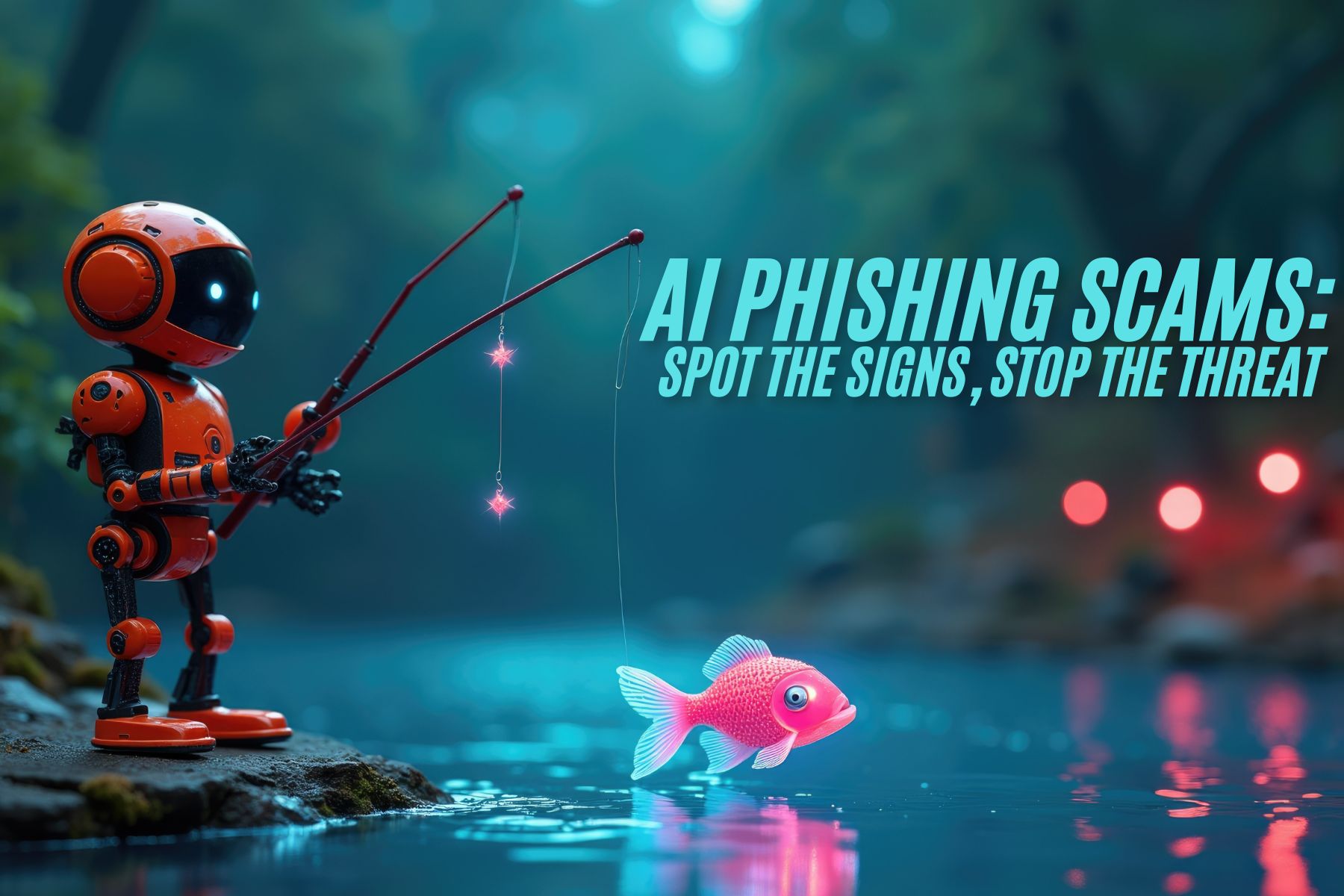Phishing scams are no longer just suspicious emails with glaring typos and promises of a Nigerian prince’s fortune. Thanks to artificial intelligence (AI), cybercriminals have upped their game, crafting phishing emails so convincing that even the most cautious employees can fall victim. Let’s dive into what AI phishing scams are, how they work, and how you can defend your business against this new wave of cyber threats.
AI phishing is a new breed of cyberattack where criminals use artificial intelligence to create highly personalized and believable phishing emails. Traditional phishing relies on a scattergun approach, sending generic, suspicious-looking messages to thousands of recipients. In contrast, AI phishing is targeted, sophisticated, and often indistinguishable from legitimate communication. Cybercriminals feed AI tools with publicly available data, such as social media profiles, company websites, and even past email leaks. This information allows AI to craft emails that mimic the tone, style, and content of trusted brands or colleagues, making them far more effective. For example, an AI-generated phishing email might look like a genuine message from your CEO requesting urgent financial information or a note from IT support asking you to reset your password.
AI-powered phishing emails are designed to bypass your instincts and fool even the most vigilant employees. Here’s what makes them so effective:
- Hyper-Personalization: AI can analyze a person’s online presence to tailor emails that feel familiar. For example, a phishing email might mention a recent project you’ve been working on or reference colleagues by name.
- Authentic Appearance: AI-generated emails are often visually flawless, replicating logos, formatting, and email signatures perfectly. They’re designed to look identical to legitimate messages from trusted sources.
- Convincing Tone: AI tools can mimic human writing styles, ensuring the email’s tone and grammar match what you’d expect from the sender.
- Timely and Contextual: By analyzing real-time data, AI phishing emails can leverage current events, deadlines, or business trends to appear more legitimate. For instance, during tax season, you might receive an email from “HR” asking you to verify your tax documents.
AI phishing preys on human psychology, exploiting our trust in familiar names, urgency, and fear of missing out. Here’s how it works:
- Impersonation: You get an email that looks like it’s from your boss or a trusted vendor, complete with their usual greeting and signature.
- Urgency: The email might claim there’s a pressing issue—an unpaid invoice, a locked account, or a missed deadline—urging you to act quickly.
- Links to Malicious Sites: These emails often include links that lead to fake login pages designed to steal your credentials.
- Attachments with Malware: An innocent-looking attachment might unleash ransomware or other malicious software onto your system.
- Social Engineering: Some AI phishing emails build trust over time, engaging in email conversations to gather more information or lower your defenses.
While AI phishing is alarmingly effective, there are steps you can take to protect your business:
- Educate Your Team: Training is your first line of defense. Regularly educate employees on how to spot phishing attempts and encourage them to verify suspicious emails by contacting the sender directly.
- Enable Multi-Factor Authentication (MFA): Even if an attacker steals login credentials, MFA adds an extra layer of security by requiring a second form of verification, like a text message or authentication app.
- Use Advanced Email Filtering: Invest in email security tools that leverage AI to detect and block phishing emails before they reach your inbox.
- Encourage a Pause: Train employees to pause and evaluate emails, especially those asking for sensitive information or urgent actions. Look for red flags like unexpected requests or slightly altered email addresses.
- Implement a Strong Cybersecurity Policy: Ensure your business has clear guidelines for email communication, including when and how sensitive information should be shared.
- Test with Phishing Simulations: Conduct regular phishing simulations to identify vulnerabilities in your team and reinforce training.
- Partner with a Managed IT Services Provider: Managed IT providers can help implement robust cybersecurity measures, monitor threats, and keep your team up to date on the latest risks.
AI phishing isn’t going away. If anything, it’s becoming more sophisticated. As cybercriminals adopt new technologies, businesses need to stay one step ahead. While no defense is foolproof, combining education, technology, and strong cybersecurity practices can significantly reduce your risk. Remember, cybercriminals only need one person to click to compromise your entire network. By understanding the threat and taking proactive measures, you can keep your business safe from AI-powered phishing attacks.
Ready to strengthen your defenses? Contact us today to learn how our Managed IT and Cybersecurity Services can help protect your business from evolving threats like AI phishing. Don’t wait until it’s too late!




